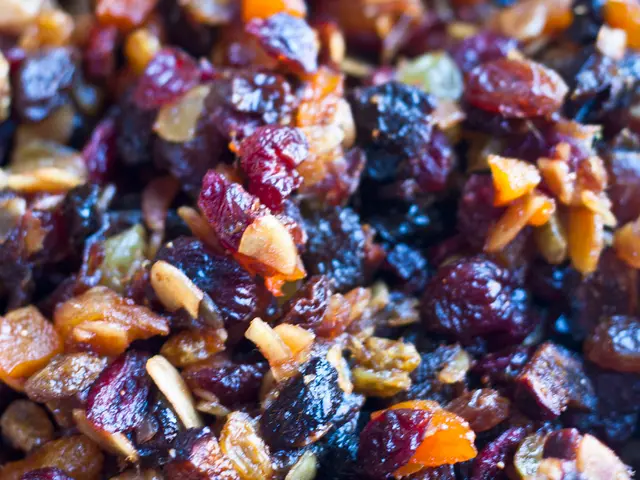Gastroenteritis Explained: An Overview of This Intestinal Infection
Gastroenteritis, often known as the stomach flu, can be a common and uncomfortable illness. It's particularly severe in children due to their smaller body size and higher risk of dehydration [1].
If you experience severe symptoms such as high fever, blood in stool, or signs of dehydration like dry mouth, excessive thirst, or dark urine, it's crucial to seek medical attention promptly [1].
Fortunately, there are ways to aid in recovery. Probiotics can help restore the natural balance of gut flora, aiding in recovery [2]. Clear fluids like water, broth, and clear juices can help keep you hydrated [2]. In children, Oral Rehydration Solutions (ORS) containing electrolytes and sugars can be especially beneficial [3].
To prevent gastroenteritis, good hygiene and food safety practices are key. Frequent handwashing with soap and water, particularly before eating or preparing food and after using the restroom, is essential [2]. Proper food handling and preparation, including cooking food thoroughly and avoiding cross-contamination, are also important [2].
Avoiding consumption of contaminated water or food, especially in areas prone to outbreaks, is another crucial step [2]. Be cautious when traveling and drink bottled water in areas where water quality is questionable [4]. Avoid street food to reduce the risk of contamination [4].
Practicing good hygiene by washing hands frequently can help reduce the transmission risk within your household. Teach your family about the importance of hygiene and safe food practices to further reduce the risk [2].
Common causes of gastroenteritis include infections from viruses, bacteria, and parasites. Viral infections like rotavirus and norovirus are frequent causes, especially in children. Bacterial agents such as Escherichia coli (E. coli), Salmonella, Campylobacter, Shigella, Clostridioides difficile, and Staphylococci are also culprits. Parasites can contribute to the condition [5].
The duration of acute gastroenteritis can vary, but symptoms typically resolve within a few days. However, some individuals may experience lingering effects for a week or more [1]. The BRAT diet, consisting of Bananas, Rice, Applesauce, and Toast, can help firm up stools and is gentle on the stomach [1].
Vaccines for rotavirus are available for infants and can prevent severe gastroenteritis in young children [1]. Store food properly to prevent bacterial growth, and refrigerate leftovers promptly [2]. Avoid caffeinated or alcoholic beverages, as they can worsen dehydration [2].
Lastly, natural remedies like peppermint, ginger, and other herbs can help ease gastrointestinal discomfort and relieve nausea and cramping [3].
References:
[1] Mayo Clinic. (2021). Gastroenteritis (stomach flu): Symptoms and causes. [online] Available at: https://www.mayoclinic.org/diseases-conditions/gastroenteritis/symptoms-causes/syc-20355561
[2] Centers for Disease Control and Prevention. (2021). Preventing Gastrointestinal Illnesses. [online] Available at: https://www.cdc.gov/nceh/ehs/rhs/food/gastrointestinal/index.htm
[3] National Health Service (NHS). (2021). Gastroenteritis - Treatment. [online] Available at: https://www.nhs.uk/conditions/gastroenteritis/treatment/
[4] Food and Agriculture Organization of the United Nations (FAO). (2021). Food Safety. [online] Available at: https://www.fao.org/food-safety-quality/food-safety-for-consumers/hygiene/en/
[5] World Health Organization (WHO). (2021). Gastroenteritis. [online] Available at: https://www.who.int/news-room/fact-sheets/detail/gastroenteritis
Science indicates that maintaining good health and wellness, especially in regard to medical conditions like gastroenteritis, requires careful attention to cleanliness and food safety. By washing hands frequently, avoiding contaminated food and water, and storing food properly, one can reduce the risk of gastroenteritis and aid in recovering from it if symptoms occur, through practices like administration of Oral Rehydration Solutions and consumption of probiotics for re-balancing gut flora.




